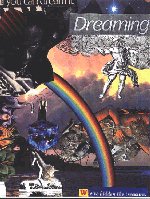|
Classes begin at the first Monday of each new month. Sign up today! (schedule) (syllabus) (costs) (about) (register)
|
||
|
Lesson 1
| Recall and Community Connections
Dream Recall Basics: Some basics and helpful hints for those who don't recall dreams or keep a journal, or those wanting to improve these skills. Connections to online sites offering help from the simplest tips on recall to exploration of long term dream journal keeping. |
|
Lesson 2 & 3 | Sigmund
Freud Recovers the Dreamwork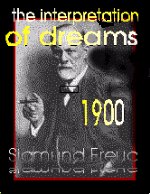 Dream Techniques From Freud:
Dream Techniques From Freud:Free Association & the Unconscious Since my interest is less in teaching psychotherapy and more about how you can interpret your dreams on your own, my approach to Freud is playful. You will still get the historical basics, but the techniques adapted from psychoanalysis will in this course be used to explore more the surface of dream. Also, since Freud's model for dreaming is still so often referenced in academic and clinical thought, I felt it was essential to include in this lesson an overview on his dream theories, particularly the Dream-Works which are such a wonderful model for how the zany parts of our imagination operate. So, light up your cigars and get ready to be surprised by what Freud thinks you are really dreaming about! |
|
Lesson 4
& 5 | Ancient Dreams and Carl G. Jung I C. G. Jung I. Me and my Shadow. I feel that even a quick foray into Jung yields potent tools in perception and significant relationships with oneself. But its a little odd for many to learn how to approach icky, yucky stuff in dreams as potential gold mines. C. G. Jung II: Beyond & Through the Personal. - This essay carries Jung's basic model into contact with the non-personal realms as they relate to dreams and dreaming and extends the idea of what a relationship with the unconscious might look like and how dreams may mediate this relationship. |
Lesson 6 & 7 | More
Jung, Jungians and Mythic Campbell Jung III: Archetype & Myth. One of the most accessible & popular aspects of Jungian thought and practice evolves from Jung's love of story, fables and myth. Joseph Campbell also helped bring to us this love of story and together, Jung and Campbell offer tools for using dreams to chart our own mythic journey. By combining our own dreams with myths and fables, our mythic journey is given a map that will carry one beyond everyday life to the world where we all meet and struggle with bigger meaning and value of life. Jung IV: Jung and Dreams. Though Jung never wrote a separate book on dreams, there is *so* much material that a special essay is needed to give a general lay of the land. Although Jung felt *each* dream should yield its own new theory, the Jungians have developed a wide array of helpful standard techniques. While one could spend several lifetimes mastering these techniques, many are accessible right away with a little practice. As a matter of fact, Jung thought dreams were *already* doing what they needed to be doing. We simply help the processes along. |
|
|
Lesson 8 & 9 | Adler, Surrealism, Phenomenology, Gestalt Dream Work
Other Pre-1960's
Dream Theories: All is not Jung and easily Freudened! The Surrealist
Movement championed dreams as a path away form the deadness of everyday
worldviews and a gateway into novel experience and surreality. Phenomenology
combined with psychoanalysis to produce ideas about approaching dreams
on their own, bracketing out our pre-conceived notions and allowing the
imagery to evolve on its own. This lesson explores these and other dream
movements and theories that haven't gotten as much attention as they deserve.
|
|
Lesson 10 & 11 | The DreamBody and Couch to Culture.
From the Couch to the Culture: Walter Bonime & Montague Ullman. While the Jungians have always enjoyed working with manifest dream material, the psychoanalytically trained schools have only come to this more recently. Bonime and Ullman were two pioneers in this regard. Bonime shifted the emphasis to the manifest or visible dream and Ullman taught practices and held groups that could work with this material in non-clinical settings. These techniques have become the standard in grassroots dream work and are used by the Association for the Study of Dreams at their conferences for introducing new participants to group dreamwork. Modifications of these techniques are used on the Electric Dreams DreamWheel groups that are part of this course. |
|
Lesson 12 & 13 | Grassroots DreamWork & Lucid Dreaming
Lucid Dreaming and Lucid Control. One of the popular new offshoots of dreamwork is lucid dreaming, or knowing you are dreaming while you are dreaming and being able, to varying degrees, to control the events and content of the dream. The lucid dreamers have formed groups and organizations to address the particular issues involved in lucid dreaming and advance the techniques used to increase the frequency of its occurrence and the depth of the experience. This lesson explores these techniques as well as looking at the scientific history of lucid dreaming's development and key figures in the field. Get ready to interact with your dreams in real time. Perhaps you are dreaming right now. How can you tell? |
|
Lesson 14 & 15 | Dreaming Science
Dreaming Science. Why does a
dreamworker need to know anything about dream science?
How many times have you heard someone say, "Oh,
science has shown that all dreaming is just a bunch of random thoughts." From the first R.E.M. discovery in the University of Chicago labs in 1953 to the latest debates on neural networks, to the revolution in MRI/PET brain scans and discoveries in neuropsychology, this lesson not only explores the history of empirical findings, but takes a more positive approach and looks at how dream science can aid in finding the meaning and value of your own dreams. No previous science course is needed for
this lesson. |
|
Lesson 16 & 17 | Anthropology & Dreams and Religion Dreaming Anthropology: If science is correct, we have been dreaming for as long as we have been mammals, maybe longer. If Campbell and Jung are correct, we have been making meaning from dreams before recorded history. This means that we have been practicing dreamwork for millions of years. This essay explores a general, brief overview of what we know about native cultures and their dream practices. Dream and Western Religion: Dreams were at the beginning of every major axis religion, both East and West, but were later repressed by the orthodoxy. What happened? In this class we trace the development and repression and revival of dream work in Judaism, Christianity and Islam. Take the psycho-spiritual trip that other cultures have been traveling for millennium. |
|
Lesson 18 - 20 | Psychic Dreams, Mutual Dreaming, Incubation, Proactive Dreaming
and Dream Sharing in Cyberspace
Post Jungians: James Hillman & the Archetypal school have opened the dream to the culture at large, and soon the postmodern writers & cyberspace will be opening us up to unheard of categories yet to be explored. This lesson explores the alternatives and offers options to our usual willful efforts that impose uses on dreams. Yes, even "being open" is an imposed paradigm. Dream Sharing in Cyberspace: From early attempts at exchanging dreams via modems and telephones to the democratic graphics of the World Wide Web, dream sharing has entered Cyberspace. What are the places where dreams are shared and how is this dream sharing different that traditional methods? Learn all the alleyways and side streets on the Net as well as the major sites for information and community. |
| Resources on Dreams
and Dreaming
One of the more practically useful aspects of the course is that you will be plugged into the online dream community. During the first few years of the Net, this community was quite small but has now grown considerably, making it difficult to navigate all the areas. Some people are interested in dream interpretation and dream sharing groups, other in lucid dreaming, mutual dreaming, telepathic dreaming, and a wide variety of other interesting dream themes. How to find just who and what you need can be confusing. I'm a great guide! I have been creating and exploring these online communities since 1994 and have developed a wide network of groups and individuals that I can put you in contact with. Besides being the editor for the Electric Dreams community e-zine, I am also the Chair of the Electronic Communications Committee at the Association for the Study of Dreams and the ASD webmaster. I write a regular column for Dream Time magazine, the Cyberphile and have contributed to the New York Times, Wired magazine, Psychology and Self Help, Dream Tree News, Dream Newzzz and many other publications. I am the author of A Brief History of Dream Sharing, Theory, Techniques and Cyberspace. (1999, DreamGate Publishing, SF isbn 1-58548-008-8 ) and wrote "Dreaming in Cyberspace", a chapter in a book called DreamScaping with Stan Krippner, Mark Waldman, Marie L. von Franz, Robert Bosnak, Eugene Gendlin, Oliver Saks and others. I have assisted and consulted many contemporary dream titans about their websites, including Cyber Psychologist Dr. Jayne Gackenback, Dream Scholar Kelly Bulkeley, Dream Pioneer Ph. D., Patricia Garfield, Ph.D., First President of ASD, Gayle Delaney, Ph.D., 2000 President of ASD, Alan Siegel, Ph.D., Strephon Kaplan Williams, author of the Senoi Dreamwork Manual, Expert witness at the O.J. Simpson trial, Robert Van de Castle, Bob Hoss, the Telecommunications Center manager for IBM and author of Dreaming in Color, and many others. See my latest project as guest editor with ASD Dream Time, Dreaming in Cyberspace.
More
Information about the Class, Dreams and Richard Wilkerson
|
||
Classes begin at the first of each new month. Sign up today!
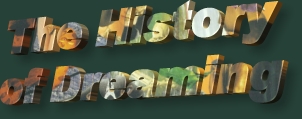
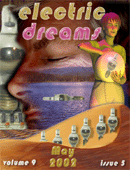
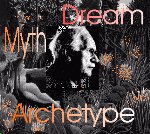

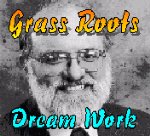
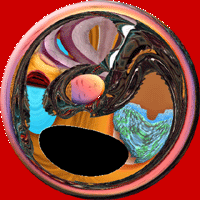

 Anthropologists and Dreams:
While
early dream anthropology was busy trying to see aboriginal cultures from
the Western viewpoints of psychoanalysis and evolutionary theory, later
anthropologists began to look for how the dream works within the culture.
The Senoi dreamwork evolved out of this cultural relativism and while highly
controversial, it stands as a model of cultural cooperation rather than
colonial imposition.
Anthropologists and Dreams:
While
early dream anthropology was busy trying to see aboriginal cultures from
the Western viewpoints of psychoanalysis and evolutionary theory, later
anthropologists began to look for how the dream works within the culture.
The Senoi dreamwork evolved out of this cultural relativism and while highly
controversial, it stands as a model of cultural cooperation rather than
colonial imposition.